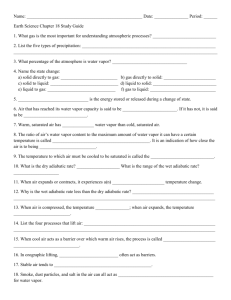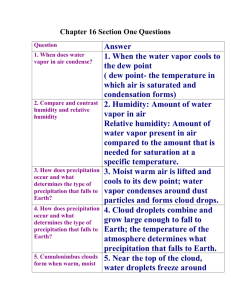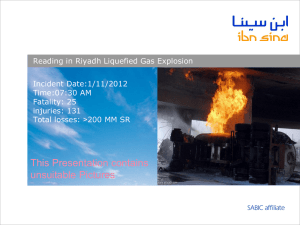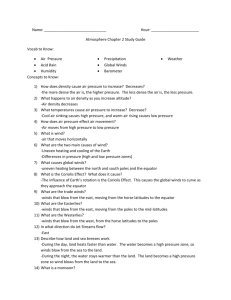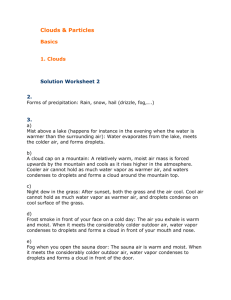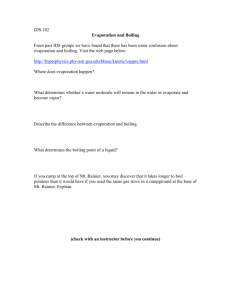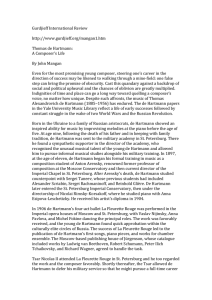030123_FAT-Hypothesis_AGU_SF_Hartmann
advertisement
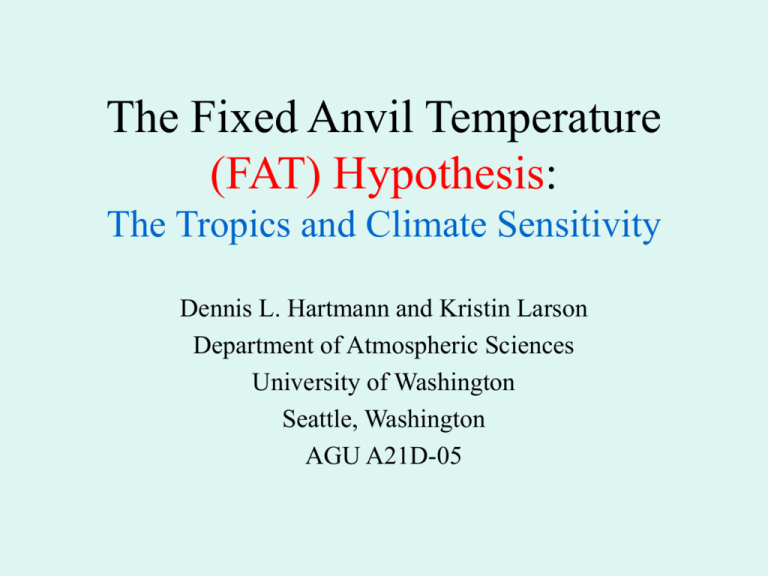
The Fixed Anvil Temperature (FAT) Hypothesis: The Tropics and Climate Sensitivity Dennis L. Hartmann and Kristin Larson Department of Atmospheric Sciences University of Washington Seattle, Washington AGU A21D-05 GMS-5 IR image Cloud Feedback High Cloud (p<440mb) in the tropics is most common over warmest SST, or over land. t>1 9% 22% 10% Finally, the FAT Hypothesis, Fixed Anvil Temperatures for All Climates. I want to argue that tropical anvil clouds appear at a fixed temperature given by fundamental considerations of: • Clausius-Clapeyron definition of saturation vapor pressure dependence on temperature. • Dependence of emissivity of rotational lines of water vapor on vapor pressure. Rotational Lines of Water Vapor and UpperTropospheric Cooling Total Beyond 18.5mm --> Fact: The radiatively-driven divergence in the clear regions is related to the decrease of water vapor with temperature following the Clausius-Clapeyron relation and the consequent low emissivity of water vapor at those low temperatures. Hypothesis: 200 hPa Convective outflow and associated large-scale divergence near 200 hPa are both associated by radiatively-driven divergence in clear skies. Further Conjecture: The temperature at which the radiatively-driven divergence occurs will always remain the same, and so will the temperature of the cloud anvil tops. Testing the FAT Hypothesis in a model. Larson and Hartmann (2002a,b) Model Study: MM5 in doubly periodic domain a) 16x16 box with uniform SST (297, 299, 301, 303K) b) 16x160 box with sinusoidal SST Clouds and circulation are predicted Cloud interact with radiation Basically a radiative-convective model in which the large-scale circulation is allowed to play a role by dividing the domain into cloudy (rising) and clear (sinking) regions. Radiative Cooling in non-convective region for SST’s ranging from 297K to 303K. From Larson & Hartmann (2002a). The temperature of the 200 hPa surface increases about 13K, while the surface temperature rises 6K. The temperature at which the radiative cooling reaches -0.5 K/day remains constant at about 212K. The temperature at which the visible optical depth of upper cloud reaches 0.1 remains constant at about 200K. Kuan-Man Xu, Personal Communication Dr. Kuan-Man Xu NASA Langley Research Center Conclusions: The favored temperature for tropical anvil cloud tops should remain approximately constant during climate changes of reasonable magnitude. FAT Hypothesis. Hartmann and Larson, GRL, 2002. The emission temperature of the rotational lines of water vapor should also remain approximately constant during climate change. Hartmann and Larson, GRL, 2002. These assertions imply relatively strong water vapor and IR cloud feedback. Remaining Questions: To what extent is what I just said correct? Will the area occupied by tropical convection change with climate? If so, how? Will the area, or optical properties of boundary layer clouds change with climate? What will happen at the tropical tropopause? Will it get warmer or colder and what will this mean for climate? Fin

